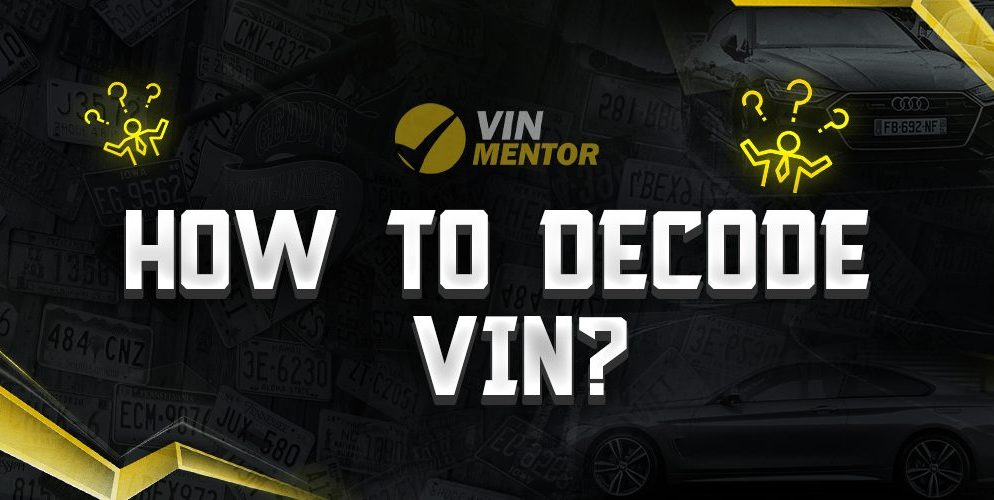

Your car’s Vehicle Identification Number (VIN) is a unique code that identifies your vehicle. The VIN can be found on the dashboard near the windshield, and also on official documents such as the title and registration.
The VIN is composed of 17 characters, including letters and numbers. Each character in the VIN has a specific meaning, which can be used to identify important information about your car. In this article, we will show you how to decode your vehicle’s VIN in less than five minutes. Let’s get started!
Key Takeaways
- The VIN is composed of 17 characters, including letters and numbers.
- Each character in the VIN has a specific meaning.
- The VIN can be used to identify important information about your car.
- The first character in the VIN identifies the country of origin.
- The second character in the VIN identifies the manufacturer.
- The third character in the VIN identifies the vehicle type.
- The fourth through eighth characters in the VIN identify the car model and trim level.
- The ninth character in the VIN is a check digit, used to verify the accuracy of the VIN.
- The tenth character in the VIN identifies the year the car was manufactured.
- The eleventh character in the VIN identifies the plant where the car was assembled.
- The last six characters in the VIN identify the car’s serial number.
How to Decode Your VIN?
Decoding your VIN is simple, once you know what each character in the VIN stands for. Here is a breakdown of the VIN characters and what they mean:
- The first character of the VIN is the “WMI” or World Manufacturer Identifier. This character identifies the country where the car was manufactured, as well as the manufacturer of the vehicle. For example, a WMI of “1” indicates that the car was made in the United States, while a WMI of “2” indicates that the car was made in Canada.
- The second character of the VIN is the “vehicle descriptor section” or “VDS”. This section of the VIN contains information about the type of vehicle, such as the body style, engine type, and transmission type.
- The third character of the VIN is the “vehicle identifier section” or “VIS”. This section of the VIN contains information about the specific vehicle, such as the model, trim level, and production plant.
- The fourth through eighth characters of the VIN make up the “vehicle attributes section” or “VAS”. This section of the VIN contains information about the safety features of the vehicle, such as airbags and seatbelt type.
- The ninth character of the VIN is the “check digit”. This character is used to verify that the VIN is correctly calculated, and is not used to identify any information about the vehicle.
- The tenth character of the VIN is the “model year”. This character indicates the year in which the vehicle was manufactured. For example, a model year of “9” indicates that the car was made in 2009.
- The eleventh character of the VIN is the “plant code”. This character indicates the location of the manufacturing plant where the vehicle was assembled.
- The final six characters of the VIN make up the “sequential production number” or “SQPN”. This number is used to identify each individual vehicle and is often used for recall purposes.
Now that you know what each character in the VIN stands for, let’s look at how to decode it.
To decode your VIN, simply look at each character in the VIN and match it to the corresponding information below.
WMI
1: United States
2: Canada
3: Mexico
4: Asia
5: Europe
6: Oceania
7: South America
8: Africa
9: Middle East
VDS
1: Passenger car
2: Light-duty truck
3: Medium-duty truck
4: Heavy-duty truck
5: Bus
6: Multi-purpose vehicle
7: Motorcycle
8: Recreational vehicle/motorhome
9: Other
A: Trailer
B: Low-speed vehicle
C: Neighborhood Electric Vehicle
D: Golf cart
E: All-terrain vehicle
F: Snowmobile
G: Farm tractor
H: Construction equipment
J: Forklift
K: Fire engine, ambulance, or other emergency vehicles
L: School bus
M: Military vehicle
N: Bus used for public transportation
O: Inquire from the manufacturer
P: Railroad car
R: Motorhome used for public transportation
S: Boat trailer
T: Camper or camping trailer
U: Inquire from the manufacturer
V: Recreational vehicle used for public transportation
W: Motorcycle sidecar
X: Expert off-road featured vehicle or ATV
Y: Motorcycle used for public transportation
Z: DMV use only
0-9: Inquire from the manufacturer
VIS
1-5: Passenger car
6-7: Light-duty truck
8-9: Medium-duty truck
A-B: Heavy-duty truck or bus
C-E: Multi-purpose vehicle
F-J: Motorcycle
K-R: Recreational vehicle/motorhome
S-W: Other
X-Z: DMV use only
0-9: Inquire from the manufacturer
VAS
1: 2 airbags (driver and front passenger)
2: 4 airbags (driver, front passenger, driver-side, and passenger-side)
3: 6 airbags (driver, front passenger, driver-side, passenger-side, side curtain airbags)
4: 8 airbags (driver, front passenger, driver-side, passenger-side, side curtain airbags, knee airbags)
5: Airbag on driver’s side only
6: Airbag on passenger’s side only
7: Airbags on both sides
8: No airbags
9: Inquire from the manufacturer
A-Z: DMV use only
0-9: Inquire from the manufacturer
Check Digit
The check digit is used to verify that the VIN is correctly calculated. To calculate the check digit, use the following formula:
Check Digit = (V1 x W8) + (V2 x W7) + (V3 x W6) + (V4 x W5) + (V5 x W4) + (V6 x W3) + (V7 x W2) + (V8 x W1) + (V9 x W0)
Where:
V1-V9 = The first nine characters of the VIN
W8-W0 = The weighting factors, which are 8, 7, 6, 5, 4, 3, 2, 10, and 0
For example, if the first nine characters of the VIN are “1M8GDM9A”, the check digit would be calculated as follows:
Check Digit = (1 x 8) + (8 x 7) + (6 x 6) + (5 x 5) + (4 x 4) + (3 x 3) + (2 x 2) + (0 x 10) + (9 x 0)
Check Digit = 8 + 56 + 36 + 25 + 16 + 9 + 4 + 0 + 0
Check Digit = 128
The check digit is then used to verify the VIN. In this example, the check digit would be “8”, which matches the last character in the VIN.
If the check digit does not match the last character in the VIN, the VIN is not valid.
What is the Easiest Way to Decode a VIN?
The easiest way to decode any VIN is to use decoders. It is as easy as entering the VIN into an online decoder, but the information you obtain will depend on the website.
Primarily, VIN decoders are used for verifying the existence of a vehicle and the authenticity of its VIN. Some VIN checkers provide more information through a full vehicle history report.
Using a VIN checker to obtain a vehicle’s history before making a used car purchase is one of the most common reasons to check a VIN. A vehicle history report will provide information about recalls, mileage, warranty claims, and equipment options.
Why Don’t Most VIN Decoders Decode the Entire 17 Digits?
Since the build data necessary to translate all 17 digits of the VIN is either not accessible or is too expensive. Most VIN decoders on the market do not indeed decode all 17 digits of the VIN. Instead, they decode the sequence of places 1 through 8, 10, and 11.
Position 9 (the check digit) and places 12–17 are where the VIN’s remaining characters are located (serial number). The serial number distinguishes each VIN, and the check digit is utilized for VIN validation.
Conclusion
Now that you know how to decode your vehicle’s VIN, you can use it to find out important information about your car. For example, you can use the VIN to check for recalls, find out about warranty coverage, and determine if a car has been in an accident. You can also use the VIN to register your car or get insurance.
If you have any questions about decoding your VIN, be sure to ask your dealer or manufacturer. They should be able to help you decode the VIN and answer any questions you have. You can also try VIN decoding services, we have found it as a best solution when it comes to tracking down vehicle history.












